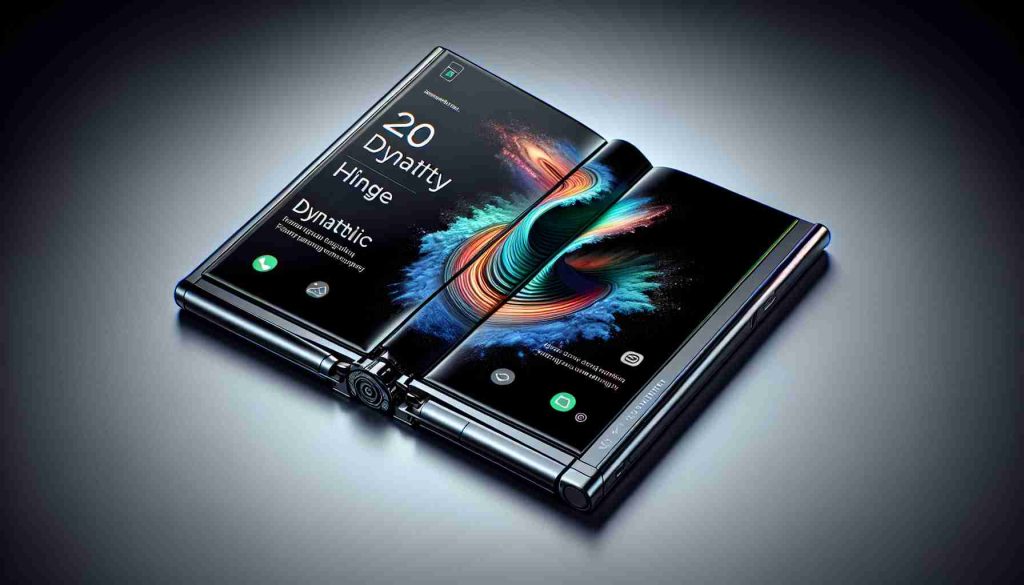Revolutionizing Smartphone Design with Dynamic Hinge Technology

Motorola is breaking new ground in smartphone innovation with their latest patent for a futuristic device featuring a hinge that moves autonomously to provide users with the optimal viewing angle. While the focus remains on enhancing camera-based activities and applications, the potential applications for such a system are vast and diverse.
The concept of how this technology operates may seem complex at first, but at its core, it involves a motorized hinge mechanism, utilizing linear actuators in tandem with shape memory alloys, along with sensors that detect user presence. These sensors provide data to the device’s processor, enabling the hinge to adjust based on the user’s proximity – lowering as the user approaches and rising as they move away. Interestingly, it appears that the camera itself may act as the primary sensor for detecting the user’s face, with a dedicated AI algorithm processing the video feed for facial recognition.
While the patent does not explicitly mention a Time-of-Flight (ToF) sensor for depth calculation, it hints at the continuous adjustments made by the hinge system, allowing for dynamic framing in various usage scenarios – from a “tent” configuration with one half resting on a surface to other innovative setups.
Motorola envisions a multitude of applications for this dynamic hinge technology, paving the way for a new era of versatile and user-centric smartphone design.
Revolutionizing Smartphone Design with Dynamic Hinge Technology: Exploring Key Questions and Challenges
As Motorola pushes the boundaries of smartphone innovation with its dynamic hinge technology, several important questions arise regarding the implications, advantages, and challenges associated with this groundbreaking development.
1. How Does Dynamic Hinge Technology Enhance User Experience?
Dynamic hinge technology offers users the flexibility to adjust the viewing angle of their smartphones seamlessly. By incorporating motorized hinges and intelligent sensors, this technology adapts to user behavior, providing optimal positioning for activities such as video calls, content consumption, and gaming.
2. What Are the Key Challenges in Implementing Dynamic Hinge Technology?
One major challenge associated with dynamic hinge technology is ensuring robustness and durability over time. Constant movement of the hinge mechanism may lead to wear and tear, requiring meticulous engineering to maintain longevity. Additionally, integrating advanced sensors and actuators without compromising the device’s slim profile presents a technical challenge.
Advantages of Dynamic Hinge Technology:
– Enhanced User Interaction: Dynamic hinge technology enables intuitive interactions with smartphones, offering hands-free adjustments for various tasks.
– Versatile Usage Scenarios: Users can benefit from multiple configurations facilitated by the dynamic hinge, opening up possibilities for diverse applications.
– Innovation in Design: By introducing dynamic hinges, smartphone design enters a new realm of functionality and aesthetics, setting new standards for the industry.
Disadvantages of Dynamic Hinge Technology:
– Mechanical Complexity: The addition of motorized hinges and sensors increases the complexity of smartphone components, potentially impacting reliability and repairability.
– Cost Considerations: Implementing dynamic hinge technology may lead to higher production costs, translating to premium pricing for end consumers.
– Potential Privacy Concerns: Sensors tracking user presence for hinge adjustments raise privacy implications that need to be addressed to ensure user trust.
Explore more on smartphone innovations and cutting-edge technologies at Motorola. Join the conversation on the future of dynamic hinge technology and its role in shaping the next generation of smartphones.







